Focus on Ballylinch Stud
Part 1 – The History
In the first of a three part series, Martin Stevens explores the history of this famous Irish stud farm with long-time Stud Manager John O’Connor
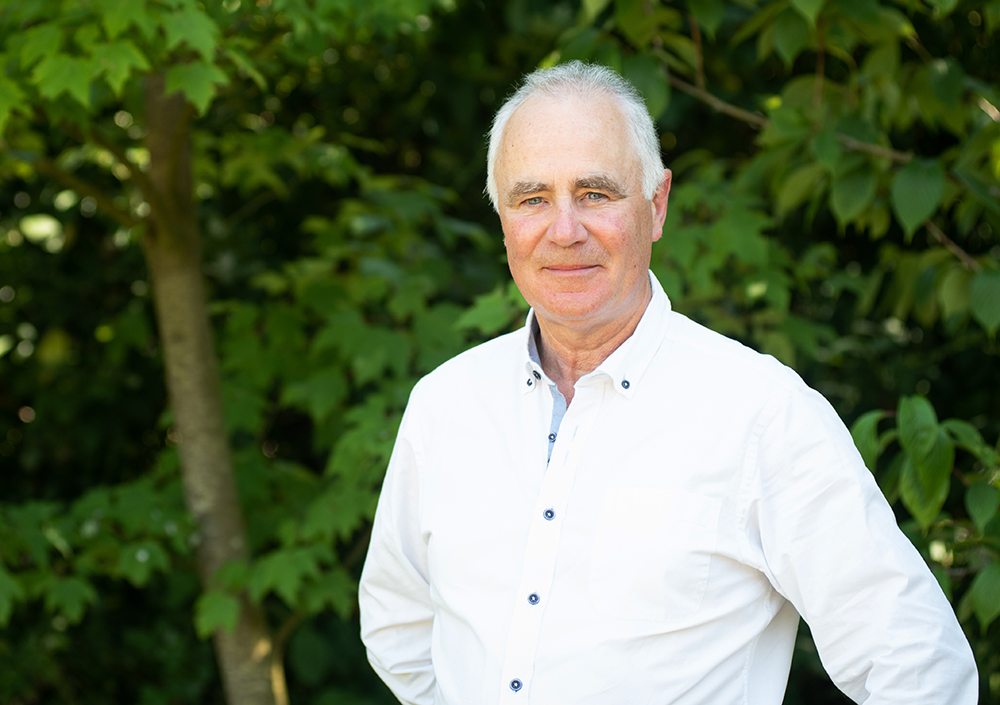
John O’Connor
Researching the history of Ballylinch Stud in a newspaper archive for the purpose of writing this article, I happened upon a clipping from the Kilkenny Moderator in September 1923 that raised a smile.
In it, the journalist describes being shown around Major Dermot McCalmont’s farm – founded only ten years beforehand – by manager Dan Ruttle, who showed him ‘The Spotted Wonder’ The Tetrarch and his son Tetratema, both of whom would be crowned Champion Sires in Britain and Ireland.
“As one shook hands with Mr Ruttle and thanked him for his kindness, a sense of the responsibility resting upon him dawned upon the visitor,” writes our scribe. “The care of two horses worth nearly half a million pounds would keep most of us awake a while, and in addition he has charge of the many valuable mares sent to Ballylinch.
Whether he feels his burden or not, no sign of worry was apparent, his quiet manner being typical of a man who knows his business to the minutest detail.”
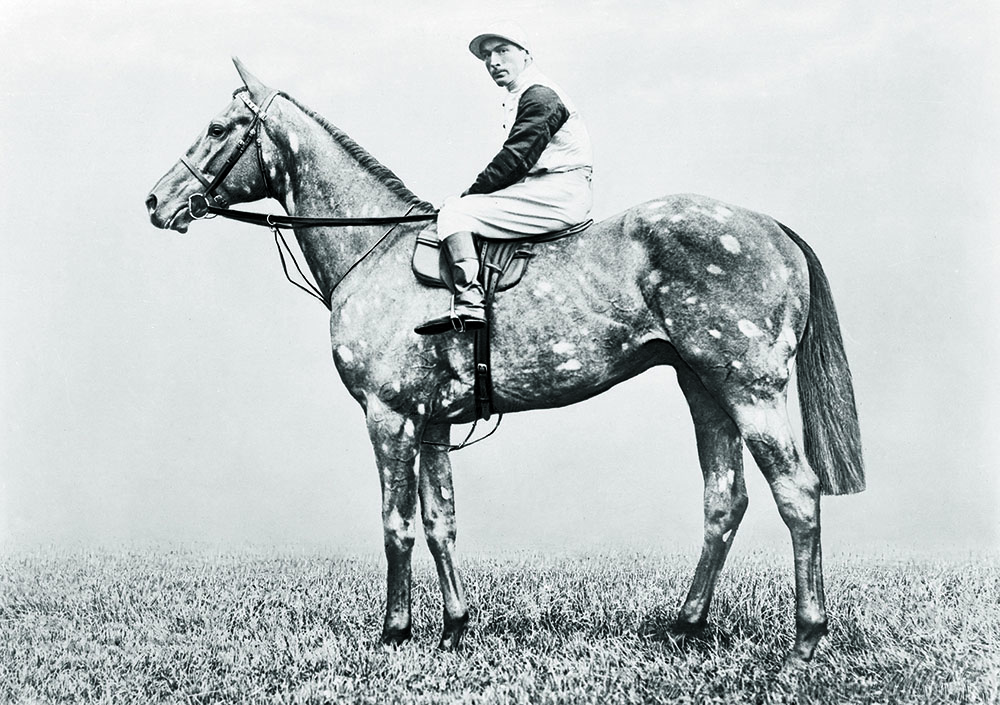
The Tetrarch, (also known as “The Spotted Wonder”), was Champion Sire in 1919, as was his son Tetratema ten years later. Both stood at Ballylinch Stud
The reason that passage in particular pleased me so much is because anyone who has been treated to a tour of Ballylinch Stud by its present managing director John O’Connor a century later will recognise the same warm hospitality from a man with a similar sense of kindness and deep knowledge of the thoroughbred.
O’Connor joined Ballylinch Stud in 1988, not long after the farm and the adjoining Mount Juliet estate had been sold by McCalmont’s son Victor to Tim Mahony, then the head of Toyota Ireland. McCalmont moved all his bloodstock to Norelands Stud, another property on the estate, from which his son Harry is keeping up the tradition of raising top-class equine athletes to this day.
O’Connor takes up the tale of his arrival at Ballylinch Stud.
“Since 1982 I’d been working for Sean Doyle as the resident vet at his Baroda Stud,” he says. “Sean was sort of a mentor to me; he was a vet himself, and I suppose he picked me out as someone he was going to bring through the business.
“Sadly, Sean was killed in a riding accident not long after the December sales in 1985, and I found myself catapulted into the combined job of resident vet and manager of the stud on behalf of Sean’s executors. I continued in both those roles until the executors decided to sell the farm and then I found myself looking for something else to do.
“I initially intended to run my own operation, as I’d bought a few mares of my own since I’d started at Baroda Stud, and I felt ready to go it alone. I was also doing consultancy for Alan Poulton, who at that time owned Ballykisteen Stud.”
O’Connor might still be a sole trader — no doubt a highly successful one — had it not been for the intervention of Dermot Weld. The trainer approached O’Connor to inform him that his new client Tim Mahony had just purchased Ballylinch Stud and was looking for someone to oversee the operation.
The move would mean O’Connor had to uproot his life, as he was recently married and living in Naas. But after a visit to Ballylinch, and being wowed by its rolling land and sense of history, he found the proposition too hard to resist.
“I’d been to Ballylinch before when I was a student and I’d accompanied my parents bringing a mare to be covered by Appiani,” says O’Connor. “I remember going into The Tetrarch’s box and the resident at the time was Sassafras, who had punctured all my youthful dreams of Nijinsky remaining unbeaten.
“So a lot of things came together. It just really struck a chord with me that I remembered the historical side of the stud, and of course it was a big challenge and Tim Mahony had lots of ambitions for it.
“That was in December 1988 and for better or worse I’m still here!”
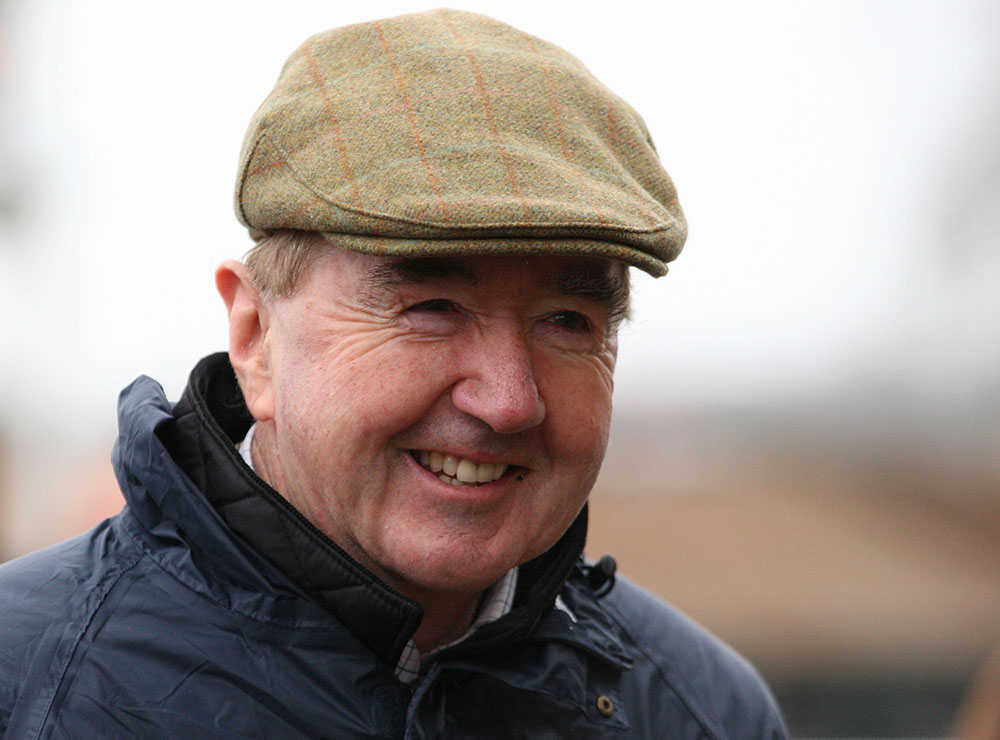
Trainer Dermot Weld approached O’Connor saying that his new client, Tim Mahony had just purchased Ballylinch and was looking for someone to run it
Definitely for the better, as the seeds of the continued success that Ballylinch Stud enjoys today were sown by O’Connor in the late 1980s and early ’90s as he set about stocking the farm and making improvements to the facilities.
“I had pretty much a blank canvas to work with as the farm was bought more or less without any stock,” he says. “When I first came here there were no stallions, four broodmares and a few fillies in training.
“I set about familiarising myself with the farm, figuring out how it might work, and I even looked into the history of standing stallions at Ballylinch and the marvellous success many of them had, starting with The Tetrarch, to see how we might develop the stallion roster.”
With Mahony’s backing O’Connor set about sourcing stallions, starting with the formerly Baroda Stud-based Bob Back, and made his first judicious broodmare purchases — most of whom are still seen in the pedigrees of high-class Ballylinch Stud graduates to this day.
“We got pretty lucky as some of those early mares included Ingabelle and Pharaohs’s Delight, who we managed to build strong families around,” he says.
O’Connor tells us about the key stallions and broodmares in the modern history of Ballylinch Stud in the second and third parts of this interview to follow shortly.
The stallions were eventually given a new home as their original facility built for The Tetrarch and Tetratema, famous for its beautiful floor mosaics, had become somewhat incongruous with modern custom.
“Traditional stallion units were a little different from modern ones,” O’Connor explains. “The original boxes were somewhat lonely, isolated places for stallions. That was probably the way it was done at the start of the 20th century but having worked in Australia, and America in particular, I was aware that stallions were happier when they were able to have the company of other horses nearby.
“So we developed a new stallion block and built new paddocks for them. The old boxes are still here and in use, but they’re now for horses arriving straight from being in training so they can familiarise themselves with their new surroundings and settle in.”
Indeed, pilgrims on the Irish Stallion Trail in January 2020 were treated to the sight of the reigning Prix de l’Arc de Triomphe hero Waldgeist gracing the historic stable and being shown off in the adjoining octagonal shed.
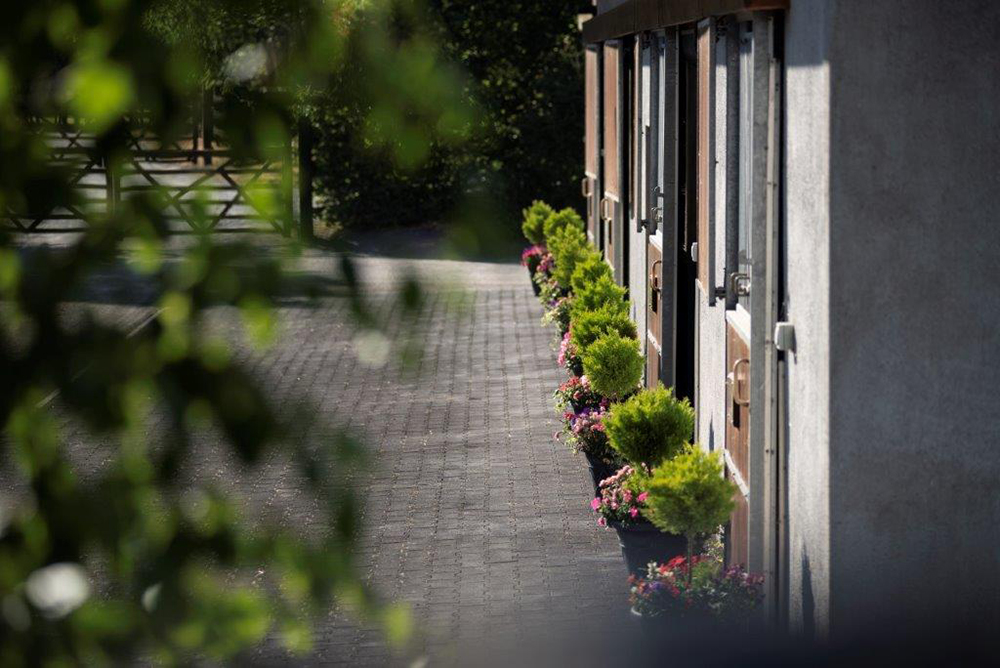
The new stallion block at Ballylinch
With the horses, facilities, staff and manager all working in harmony, Ballylinch Stud enjoyed plenty of success throughout the 1990s and early 21st century.
Priory Belle was the first homebred to carry the Mahony family’s green, orange and white silks to Group 1 victory when she won the Moyglare Stud Stakes in 1995, and she was followed by other high-class colour bearers on the track such as Anam Allta, Lady Wingshot, Modeeroch, Normandel and Wizz Kid.
Group/Grade 1 winners bred on the farm and sold to other owners under the ownership of the Mahony family include Al Wukair, Belardo, Chriselliam, Eva’s Request, Opinion and Red Rocks.
Tim Mahony died in June 2008 but his family kept Ballylinch Stud until 2014, when they sold the property to US media magnate John Malone. Thus started a new chapter in the operation’s history.
“The Mahony family were keen to reduce the size of their holdings a bit and they had initially sold the Mount Juliet leisure and golf facility,” recalls O’Connor. “John Malone’s Irish contacts had come to look at Mount Juliet as he’s an investor in hotels too. In the end they decided not to buy it, but as it happened they had taken a shine to the stud farm.
“John had bought Bridlewood Farm in Ocala a couple of years before that and was developing his interests in thoroughbred breeding, and it was John McCormack — who actually spent a season working with us when he was a young man and is still a great friend to this day — who said to the Malones that they should have a look at Ballylinch and they did, along with Bridlewood’s general manager George Isaacs, and they all fell in love with the place and the horses.
“I think both the Mahonys and the Malones are the sort of people who would be keen to make sure the handover was absolutely seamless, and so all the staff stayed on, the bloodstock was bought with the farm and everything was very simple. It went from one owner signing the cheques one week to the other owner the next.
“It made things very easy for me as the entire team I’d assembled over the last 25 years or so stayed on, and we’re all grateful to the Mahonys and the Malones for making the transition so smooth.”
The new era for Ballylinch Stud also brought about an expansion that was not quite part of the original plan.
“When the Malones first looked at Ballylinch there were a number of other people also interested in purchasing it and they were uncertain as to whether they were going to be able to complete the purchase,” explains O’Connor.
“In the meantime, Castlemartin Stud came up for sale with a very tight deadline on it, so they decided to also put in an offer on that property and it just so happened that they ended up buying both farms, even though they maybe only intended to buy one. The Malones asked me to integrate Castlemartin into the running of Ballylinch and I think we’ve managed to do that quite successfully.”
Castlemartin Stud, another magnificent property located on the outskirts of Kilcullen in County Kildare, has been upgraded by the Malones and is now home to many of the Ballylinch Stud mares.
“The Malones have invested significantly in upgrading the facilities at both properties, and they stand up very well alongside the best farms anywhere in the world I think,” says O’Connor.
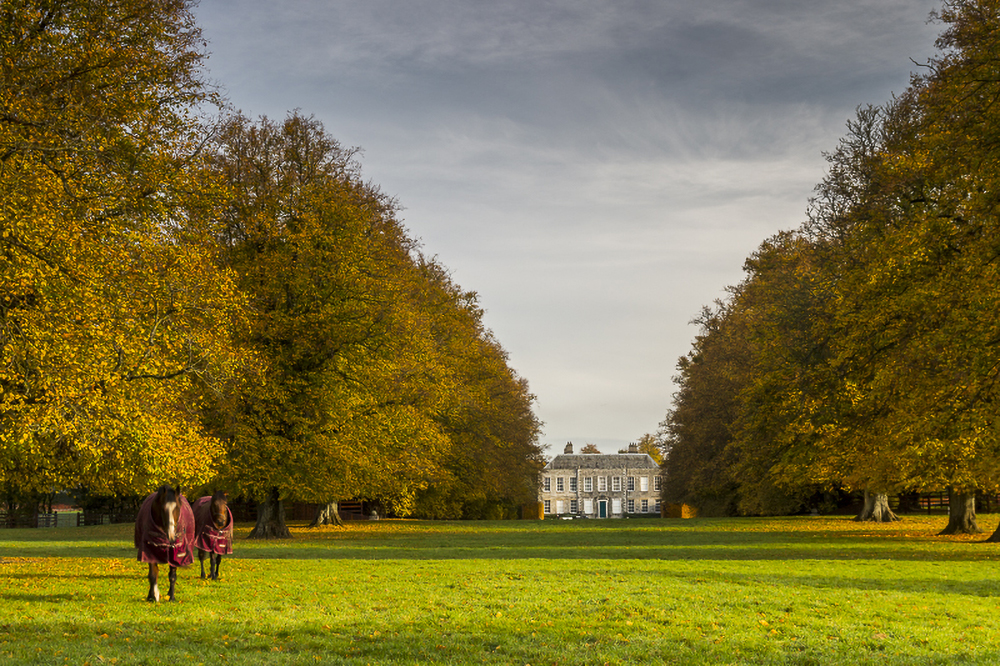
Castlemartin Stud, purchased by the Malones at the same time as Ballylinch, is now home to many of the stud’s broodmares
The farms and their staff are producing world-class results, too, and the stallion roster at Ballylinch Stud has not been in such rude health since The Tetrarch stood alongside Tetratema in the 1920s and ‘30s.
Heading the roster is Lope De Vega, whose tally of top-level winners rose to 12 in 2020 through three horses who exemplify his strong international profile: Gytrash, who landed the Black Caviar Lightning in Australia; Lucky Vega, who scored in the Phoenix Stakes in Ireland; and Aunt Pearl, who stormed to success in the Breeders’ Cup Juvenile Fillies Turf in the US.
Lope De Vega commands a new high fee of €125,000 alongside Make Believe, whose first three-year-old crop yielded Prix du Jockey Club hero Mishriff in 2020; New Bay, who has caused a stir with his debut two-year-olds just turned three; the promising Fascinating Rock and young Arc victor Waldgeist.
The Ballylinch broodmares have been pulling their weight as well. Matauri Pearl, a Listed-placed daughter of Hurricane Run, owned in partnership with Ecurie des Charmes in France, is the dam of Aunt Pearl, while Majestic Dubawi and Modernstone – both bought after the Malones purchased the stud and invested in replenishing the stock – are the dams of two further Pattern-winning two-year-olds of 2020 who hold significant promise in the year ahead, Isabella Giles and Lone Eagle (the last named owned by Ballylinch with Aquis Farm).
O’Connor can afford to be proud of his achievements at the stud but he is not one for resting on his laurels.
“You should never be complacent and feel you’ve done everything you can do,” he says. “If you want to stay relevant you’ve got to keep working and looking forward and to continue trying to improve the facilities, broodmare band and stallion roster. The Malones have been very good, investing heavily in both farms, and so we’re looking to the future with confidence.”
And to the relief of many, O’Connor, who was awarded the Irish Thoroughbred Breeders’ Association’s highest honour when inducted into the hall of fame in 2018, has no thoughts of retirement.
“When I leave will be a decision made by the Malones,” he says with a smile as he rebuffs the question. “As long as they’re happy to keep me, I’m happy to stay. I continue to be fascinated by every aspect of breeding racehorses.”
By this point I have taken up a good hour of O’Connor’s precious time, which no doubt could have been put to good use around the farm or on office admin.
But ever accommodating, and taking pleasure in talking about the horses who have defined his working life, he shows no signs of wanting to wind up the conversation.
Once again I’m put in mind of my journalistic predecessor meeting O’Connor’s stud manager predecessor Dan Ruttle in 1923.
“All day a stream of visitors kept him on the move and his patience must have been sorely tried,” he noted in his article in the Kilkenny Moderator. “Yet the portals were unlocked for the last visitor with the same courtesy as for the first.”
O’Connor is keenly aware – and respectful – of his place in history. He takes great pleasure in the fact that Stephanie von Schilcher of Carrigbeg Stud is still bringing mares to be covered at Ballylinch Stud a full 55 years after she took Countess Batthany’s mare Chambord to be covered by Fortino there, the resultant foal being the multiple Group 1 winner Caro, whose male line is flourishing thanks to Uncle Mo.
So I think O’Connor would be pleased with the similarities that bridge the century since the Kilkenny Moderator journalist visited the stud.
“Ballylinch has an extremely important history, and I like to think we’re loyal to the heritage of the place,” he says. “So when we make changes we try to make sure we don’t take from the original architecture of the place. We’ve restored many of the older buildings so they still have a function in the 21st century.
“I think that’s only right in an industry with a long unbroken history that goes back 300 years to the start of the thoroughbred. It’s incumbent on those who run historical farms to keep them as close to their heritage as they can.”
Modest to a fault, he would no doubt wince at all this praise as well.
“I’ve always believed that one learns from one’s mistakes and on that basis I should be pretty wise by now,” he laughs.
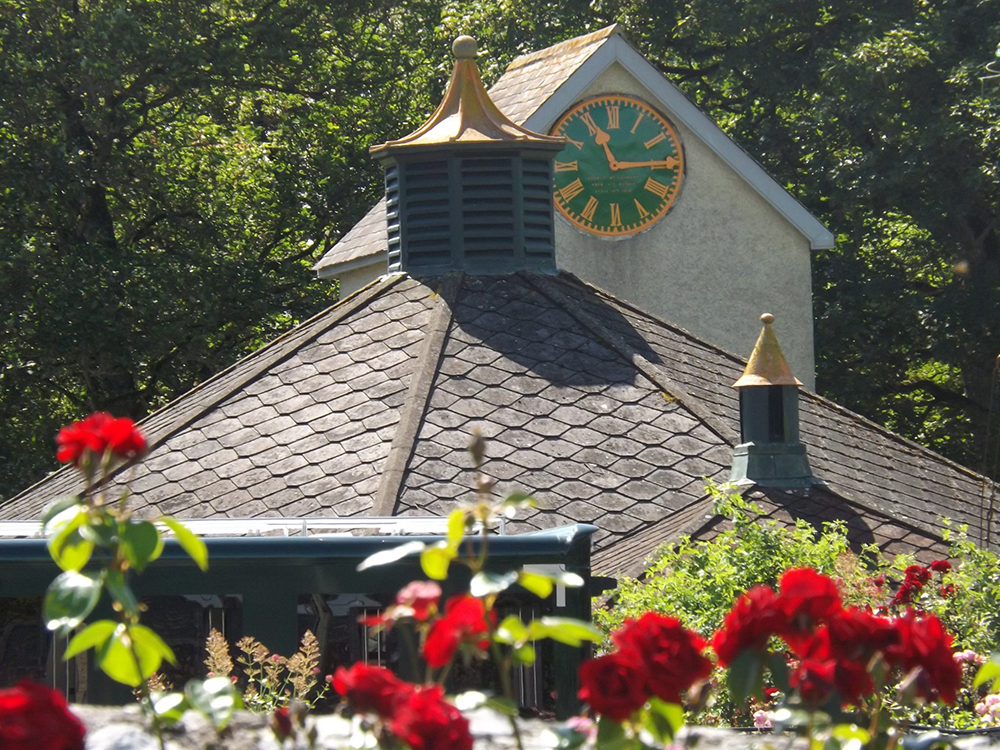
New advertised stallions to stud in 2024
Click on any of the new stallions below to go straight to their records
- ACE IMPACT
- ASYMMETRIC
- BOLSHOI BALLET
- BOUTTEMONT
- CHALDEAN
- DRAGON SYMBOL
- DUBAI MILE
- EL CABALLO
- EREVANN
- GOOD GUESS
- HURRICANE LANE
- KENWAY
- LITTLE BIG BEAR
- LUSAIL
- MAC SWINEY
- MARIE’S DIAMOND
- MIDNIGHT SANDS
- MODERN GAMES
- MOJO STAR
- MOSTAHDAF
- MUTASAABEQ
- NATIVE TRAIL
- PADDINGTON
- PYLEDRIVER
- SHAQUILLE
- SUBJECTIVIST
- THE ANTARCTIC
- TRIPLE TIME
- VADENI
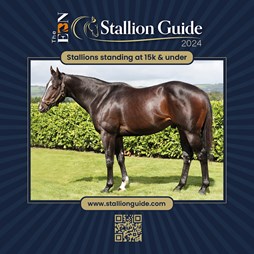
Click below to buy the 2024 book.
Why Advertise Your Stallion
Each Advertised Stallion comprises:
An Overview • Stud Record • Sales Record • Race Record • Pedigree Record
